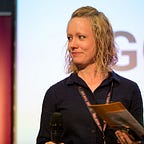What does good product governance look like?
In this blogpost I’ll talk about how we designed a new governance model for our products at Citizens Advice, and what we hope the outcomes will be.
Digital and design teams like ours work differently to the rest of our organisation. We plan and re-plan in shorter cycles. We make rapid data-driven decisions to allow our product teams to move quickly, and can deploy changes and improvements to services within hours.
Being aware of these differences means it’s important to be empathetic to the needs of our colleagues and stakeholders. This means understanding how they work, what they care about, and what they worry about. In return, we need to explain our work in a way that people can understand and engage with meaningfully.
As product people we’re well placed to do this — it’s part of our job. So when it comes to governance, we’ve taken the same approach.
Why we‘re designing product governance
The agile tools and techniques our product teams use, such as daily stand-ups, regular planning meetings, and retrospectives, are all ways of governing delivery.
Alongside this, our senior leaders rely on structured models of governance such as board meetings, steering groups, and monthly reporting to assure the work that we do. These forums typically align with our funding models — for example, when we receive money from a specific funder to deliver a service, a new board will be created to govern the various deliverables for this funded programme.
In contrast, our core products support the delivery of advice across all of our services, and unlike projects or programmes they don’t have a defined end date. This creates a mismatch between our current governance and the purpose of our product teams — i.e. to design and deliver live services in an agile and iterative way, with persistent funding for ongoing improvement.
As a product community we share many of the same stakeholders and user groups, at both a national and local level. This means that teams often fall under multiple governance mechanisms, presenting new risks; the inefficiencies linked to double or triple reporting, and the risk that different boards disagree on each other’s decisions.
How we’re designing product governance
We wanted to make our teams and organisation more efficient, so we’ve set about designing a new model. Digital transformation means changing your business processes end to end. For a traditional organisation like ours delivering critical frontline services, we have to do this in a controlled, incremental way.
To start with, we created a new Product Board — jointly chaired by our Director of Customer Journey and our Chief Technology Officer. This is a monthly get together of people representing the key business areas that our product teams work with.
We’re fortunate that these senior leaders are open to different ways of working. They encouraged our product community to take the lead in deciding how this should work. Here’s what we came up with as first principles.
Good product governance at Citizens Advice should…
- Ensure alignment with Future of Advice strategic framework
- Build trust between the product community and board members (my personal favourite)
- Inform other teams about what we’re doing
- Ensure consistency of governance across our product portfolio
- Reduce risk from duplicated efforts and dependencies
We also proposed what we think the main functions of the product board should be. These are the main types of decision we’ll come to the board for:
- Set strategy and direction
- Coordinate and prioritise requests from across the organisation, particularly where these compete
- Give feedback on product roadmaps, including agreeing scope
- Tell product teams about relevant activities in other parts of the organisation
- Assess and support investment cases for new products or services
2. Address skills and resource needs for product teams, for example lack of technical architecture oversight.
3. Accept and be accountable for key risks, including agreeing mitigation plans
4. Support to create organisational buy-in
- Bring the network with us
- Embed a product culture across the organisation
- Spread a shared language so colleagues understand how we work
By explaining these expectations we’re helping board members our to understand what we need, and how they can add value to our work.
What we‘ve come up with
As a product community we co-created the following outputs:
- A proposal for how our products should be governed (a document summarising the above)
- A google form for providing product performance updates, updated monthly. Here’s a blank example. This provides a way for Product Board members to measure the value of product teams and their work over time.
- A slidedeck that provides a high-level overview of our product portfolio, to share with our broader team. This information is pulled directly from the google form responses to avoid duplication of effort.
I’m pleased to say our first trial Product Board meeting was a success, and board members accepted our proposal. The product community provided our first round of product performance updates, and we’ve had great feedback from both the board and wider team members on how useful they are.
What’s next
We’ll keep iterating the above outputs based on feedback from board members and the wider team. For example, we might cut the information differently depending on the type of decision we need to make.
The Product Board will work with our performance and planning function to rationalise governance models. Our product community will continue to be involved in suggesting ways to do this, with the ultimate aim to have fewer governing forums overall.
We’ll continue to use governance as a forum for conversation and challenge on working towards the best outcomes for clients.
And finally
Are you tackling similar challenges? Are you as geeky about product governance as I am? I’d love to hear from you! Get in touch at Kylie Havelock.
